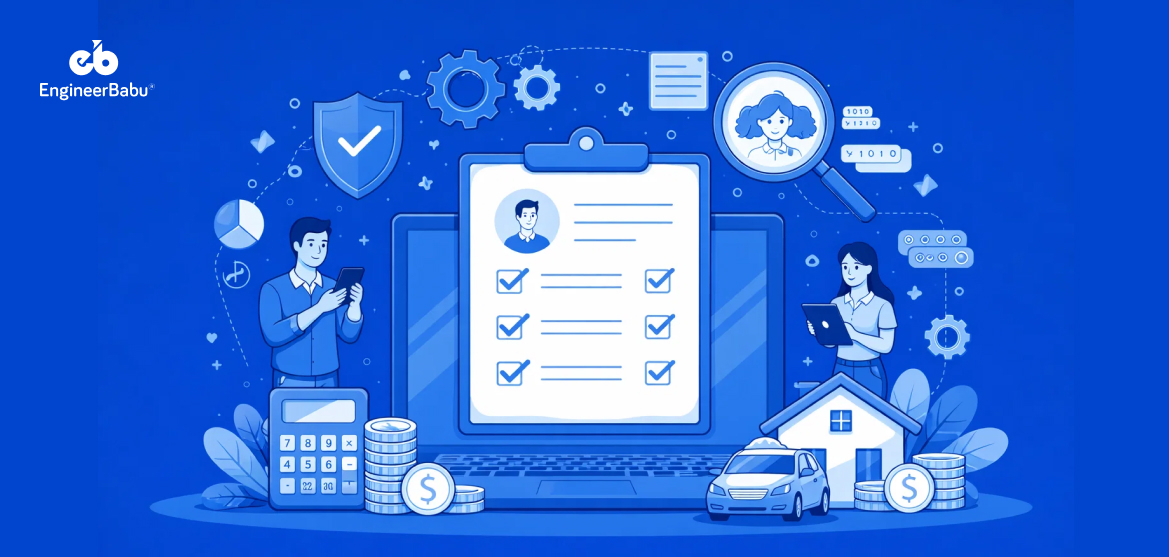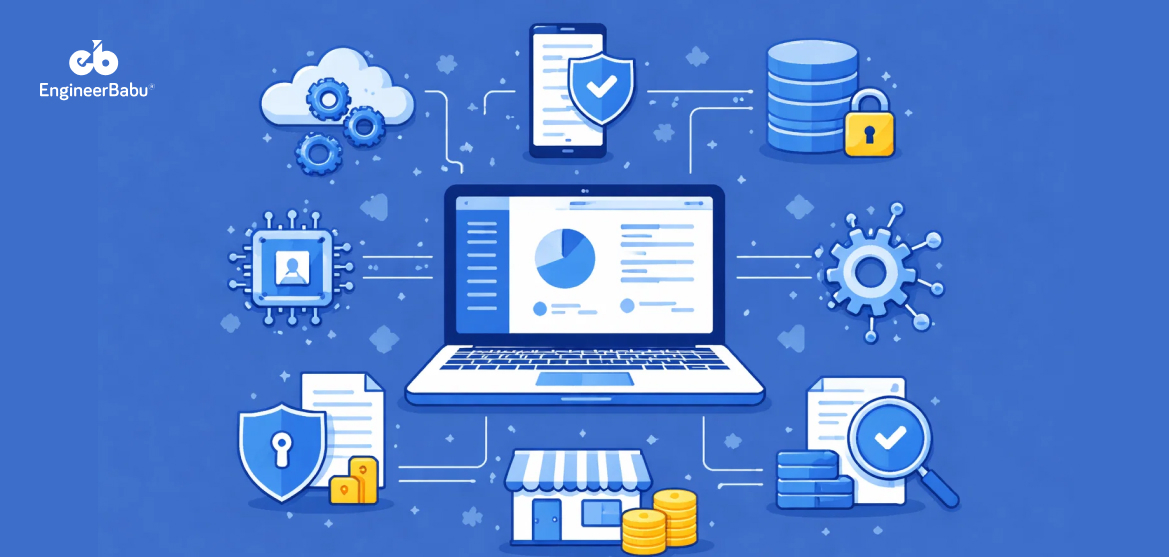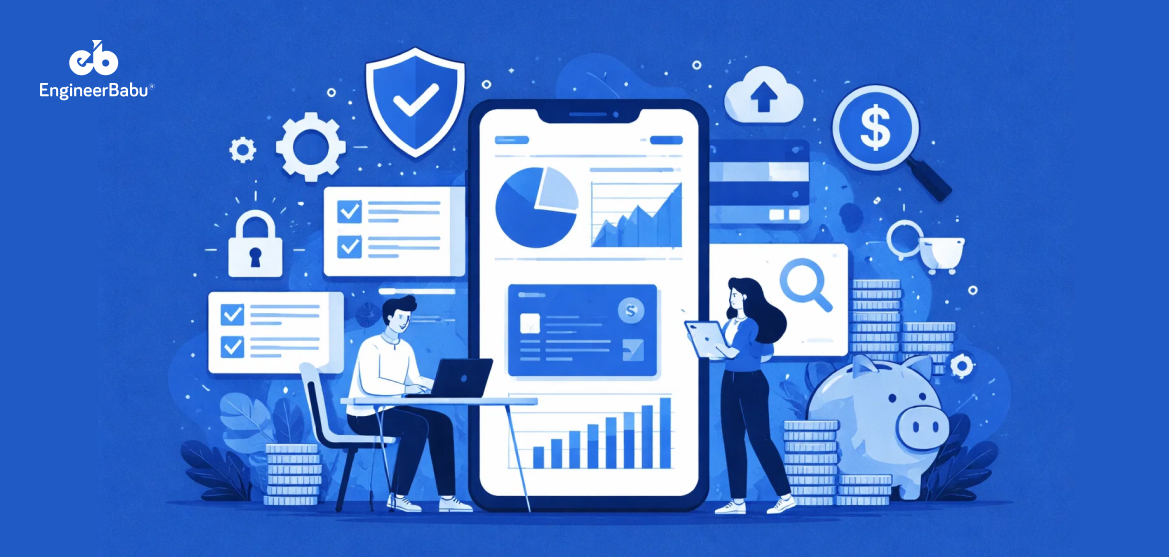If you work in lending today, borrowers expect speed, transparency, and reliability at every step. They also demand a convenient financing process, where any delays can negatively impact their experience and your credibility.
For U.S. lenders, choosing between a loan origination system (LOS) and a loan management system (LMS) is more than picking software. It’s about building a lending process that scales with demand.
The syndicated-loan market is a good example. Over the last decade, the number of lenders active in this space has grown by about 1.3 percent per year, according to McKinsey & Company. More players in the market means more competition, and lenders that can process loans faster and manage portfolios more efficiently have a clear edge.
This article will focus on the key differences between LOS and LMS, helping lenders decide whether they need stronger support at the origination stage or in ongoing loan management. Choosing the right system can result in significantly lowering delays in the lending process. So, without wasting much time, let’s jump straight into it.
What is a Loan Origination System (LOS)?
Loan origination software (LOS) is the software that manages the process of turning a loan application into an approved and funded loan. It is the starting point of the lending cycle, handling the initial stages such as application processing, documentation collection, credit assessment, and pre-approval procedures. LOS focuses on efficiency, accuracy, and compliance.
Here are the main functions of an LOS:
- Application Intake
Borrowers can complete loan applications online, and all details are stored in one central platform. This streamlines the loan application process, eliminates back-and-forth paperwork, and gives loan officers instant access to the information they need. - Credit and Scoring
An LOS integrates with U.S. credit bureaus like Equifax, Experian, and TransUnion to pull reports instantly. With automated scoring and credit assessment, lenders get quick insights into borrower eligibility. - Underwriting
The system applies preset rules to calculate key ratios and highlight risks, automating the underwriting process. This supports faster and more accurate decision making, helping underwriters make consistent decisions in less time. - Compliance
From TILA disclosures to audit-ready records, an LOS helps lenders stay aligned with federal and state regulations. Built-in compliance features include document verification, reducing the risk of costly errors or penalties. - Approval and Funding
Once approved, the LOS enables e-signatures, sends borrower updates, and even triggers payment disbursements. It also helps verify and manage loan terms, creating a faster, smoother experience for both lenders and borrowers.
Key features of loan origination software—such as automated application intake, credit assessment, document verification, and streamlined underwriting—significantly enhance operational efficiency throughout the lending process.
When comparing LOS vs LMS, the LOS is clearly focused on the front end of lending: making sure new applications move quickly, accurately, and in full compliance.
What is a Loan Management System (LMS)?
A loan management system, or LMS, is the software lenders use after a loan has been disbursed, providing robust loan servicing and a comprehensive loan servicing infrastructure. LMS covers the full lending lifecycle and supports lending operations beyond disbursement, ensuring repayments, servicing, account management, and customer interactions are handled efficiently throughout the lending lifecycle. By automating and streamlining these processes, LMS enhances operational efficiency for financial institutions. Let’s now look at the must-have features of a loan management Software.
Here are the main functions of an LMS:
- Repayment Tracking
The LMS schedules payments, manages payment schedules, applies interest, and updates balances automatically. It tracks the entire payment lifecycle, allowing borrowers to see their payment history in real time, which builds transparency. - Collections Management
If payments are missed, the system generates reminders and escalations. This helps lenders manage delinquencies without overwhelming staff. - Customer Communication
From payment alerts to account statements, an LMS keeps borrowers informed. Many systems also offer self-service portals for added convenience and integrate with customer relationship management platforms to improve borrower interactions and streamline communication. - Regulatory Compliance
Servicing rules in the U.S. require detailed reporting and accurate records. An LMS simplifies compliance by maintaining up-to-date logs, generating reports on demand, and providing robust compliance management to monitor regulatory requirements and ensure adherence throughout the loan lifecycle. - Portfolio Management
Lenders can view overall loan performance, spot trends, and make data-driven decisions. Portfolio management in LMS is critical for scaling operations while keeping risks under control, supporting risk management and detailed account management for each customer.
When evaluating LOS vs LMS, the LMS is designed for the back end of lending, where loan servicing, loan servicing infrastructure, repayment, and customer service determine long-term success and operational efficiency.
Core Differences Between LOS vs LMS
Choosing between the two starts with understanding the key differences between LOS and LMS. While both are designed to make lending more efficient, each system focuses on a distinct stage of the lending lifecycle and serves different teams within lending operations.
Banks, credit unions, and other financial institutions use these systems to streamline their lending operations. By looking at their roles side by side, it becomes easier to see where LOS vs LMS fits into your lending strategy.
Stage of the Loan
An LOS is built to manage the initial stages of the lending cycle. It handles applications, documentation collection, credit pulls, underwriting, and compliance checks before funds are disbursed. By contrast, an LMS activates once the loan is approved and money changes hands. It supports the full lending lifecycle after approval by ensuring payments are collected, accounts are updated, and borrowers are kept informed throughout the loan’s term.
Primary Users
The people using each system are different. Loan officers and underwriters rely on an LOS to process applications quickly and accurately. Servicing teams, collections staff, and customer support agents use an LMS to track repayment schedules, follow up on late accounts, and manage borrower communications. The distinction in users highlights how each tool supports separate business goals.
Compliance Focus
In the U.S., compliance requirements vary depending on the loan stage. An LOS ensures proper disclosures and audit trails during origination, helping lenders meet CFPB and state-level regulations. An LMS, on the other hand, provides ongoing compliance management by monitoring regulatory requirements, tracking regulatory changes, and ensuring adherence to standards throughout the loan lifecycle. Additionally, an LMS supports risk management by tracking payments, identifying borrower or market-related risks, and ensuring compliance to mitigate potential financial issues. Both systems reduce risk but do so at different points in the lending journey.
Integration Needs
Integration is critical whether you choose LOS or LMS. An LOS often connects with credit bureaus, fraud detection tools, e-signature platforms, and customer relationship management (CRM) platforms to enhance borrower data management. An LMS integrates with payment gateways, ACH processors, accounting software, and can also connect with CRM systems. In practice, many lenders link both systems together, along with CRM integration, to create a seamless borrower experience from application to repayment.
Credit Review and Risk Assessment
Credit review and risk assessment are at the heart of responsible lending, enabling financial institutions to evaluate borrower creditworthiness and make informed, compliant decisions throughout the loan origination process. In today’s competitive landscape, leveraging technology is essential for optimizing these critical steps and ensuring a seamless customer experience.
A modern loan origination system (LOS) empowers lenders to automate and streamline credit review from the very first stages of the loan lifecycle. By integrating directly with credit bureaus, a loan origination system pulls real-time credit history and scores, providing a comprehensive view of each applicant. Automated credit scoring models and risk assessment tools help lenders quickly evaluate borrower profiles, flag potential risks, and ensure that every loan approval aligns with internal policies and regulatory requirements.
Document management and verification are also central to the LOS, allowing for efficient validation of income, identity, and other key borrower information. This not only accelerates the loan origination process but also reduces manual errors and compliance risks.
Once a loan is disbursed, a loan management system (LMS) takes over, providing ongoing oversight of loan performance and borrower creditworthiness. The LMS continuously monitors loan payments, tracks missed payments, and generates automated alerts for delinquent accounts. This proactive approach enables lenders to identify emerging risks early and take action to protect their loan portfolio.
LOS vs LMS: Comparison Table
Feature | Loan Origination System (LOS) | Loan Management System (LMS) |
|---|---|---|
Loan Stage | Handles applications, underwriting, and approvals | Manages repayments, servicing, and customer support |
Primary Users | Loan officers, underwriters, compliance teams | Servicing staff, collections, customer support agents |
Compliance Focus | Disclosures, origination records, federal and state audits | Servicing rules, billing accuracy, delinquency logs |
Integrations | Credit bureaus, fraud checks, e-signatures | Payment systems, ACH, accounting tools |
Main Goal | Speed, accuracy, and regulatory alignment in origination | Efficient servicing, repayment tracking, customer care |
Key Features | Automates borrower onboarding, document collection, credit analysis, decisioning, and workflow management to streamline the lending process | Automates payment scheduling, account management, delinquency tracking, customer communications, and reporting to improve servicing efficiency |
When Do U.S. Lenders Need LOS?
A loan origination system, or loan origination software, is most valuable for lenders who need to process applications quickly and consistently. Mortgage companies, auto lenders, credit unions, banks, and other financial institutions often rely on LOS platforms to manage large volumes of incoming applications.
Loan origination software automates key functions such as credit assessment, application intake, document collection, and regulatory compliance. By automating credit pulls, credit assessment, underwriting, and disclosures, an LOS reduces turnaround time while maintaining compliance with U.S. regulations and improving decision making.
Loan origination systems work seamlessly with other platforms, such as loan management systems, to facilitate data transfer and streamline the entire loan process from application to repayment. This integration enhances operational efficiency by reducing manual workloads, minimizing errors, and accelerating decision-making, ultimately improving borrower experience.
Speed and borrower experience are the biggest reasons to adopt an LOS. In competitive markets like residential mortgages, a faster approval process can be the difference between winning and losing a borrower.
Lenders that modernize their origination process not only improve efficiency but also build trust by giving customers clear updates throughout the application journey.
When Do U.S. Lenders Need LMS?
A loan management system becomes essential once loans are disbursed and loan servicing begins, as it provides the core loan servicing infrastructure needed to oversee the entire lending cycle post-disbursement. There are various types of loan management software each dedicated to community banks, credit unions, and online lenders to handle repayment schedules, customer communications, and delinquency management. An LMS manages the full payment lifecycle, tracking each stage from disbursement to final payment, and ensures accurate payment schedules for all loan types, including personal loans.
By automating these processes, lenders benefit from improved account management, enhanced risk management, and robust compliance management to monitor regulatory requirements and maintain legal standards. This automation also drives operational efficiency by reducing manual errors, streamlining workflows, and accelerating decision-making.
The strength of an LMS lies in long-term borrower relationships. U.S. lenders managing large or growing portfolios need tools that simplify collections, generate compliance reports, and improve customer support.
When evaluating LOS vs LMS, an LMS is the clear choice for lenders focused on repayment performance, customer satisfaction, and scalable servicing operations.
Conclusion
LOS vs LMS is not a simple software choice but a strategic decision that shapes how efficiently your lending business operates. An LOS streamlines applications, underwriting, and compliance during origination, while an LMS manages repayments, servicing, and borrower relationships after disbursement
Some lenders may need one, while others benefit from both working together in an integrated system.
If you are ready to build a lending platform that matches your business model and scales with the U.S. market, partner with a trusted fintech app development company. EngineerBabu can help you design and implement tailored solutions that align with your growth goals.
FAQs
1. What is the main difference between LOS and LMS?
The key differences between LOS and LMS lie in their roles within the lending process. An LOS handles the pre-loan process, from applications to approvals, while an LMS manages everything after disbursement, including repayments, collections, and customer communication.
2. Do lenders in the U.S. usually need both systems?
Many do. Mortgage lenders, credit unions, and fintech startups often use both to cover the full lending lifecycle, ensuring efficiency from origination through servicing and addressing all stages of a loan’s progression.
3. How does compliance differ between LOS and LMS?
An LOS ensures regulatory disclosures and audit trails during the origination stage, with a primary focus on initial compliance requirements. An LMS, on the other hand, emphasizes compliance management throughout the entire loan lifecycle, including accurate billing, delinquency reporting, tracking regulatory changes, and ensuring ongoing servicing compliance to mitigate risk and maintain legal adherence.
4. Which system is better for small U.S. lenders: LOS vs LMS?
Smaller lenders often choose based on their immediate needs. If loan approvals are the bottleneck, an LOS is more useful. If repayment management is the challenge, an LMS provides more value.
5. Why should I choose EngineerBabu for lending software solutions?
EngineerBabu specializes in building fintech platforms, including LOS and LMS solutions, that are secure, compliant, and scalable. As a fintech app development company, they can customize tools to fit your exact lending requirements.




